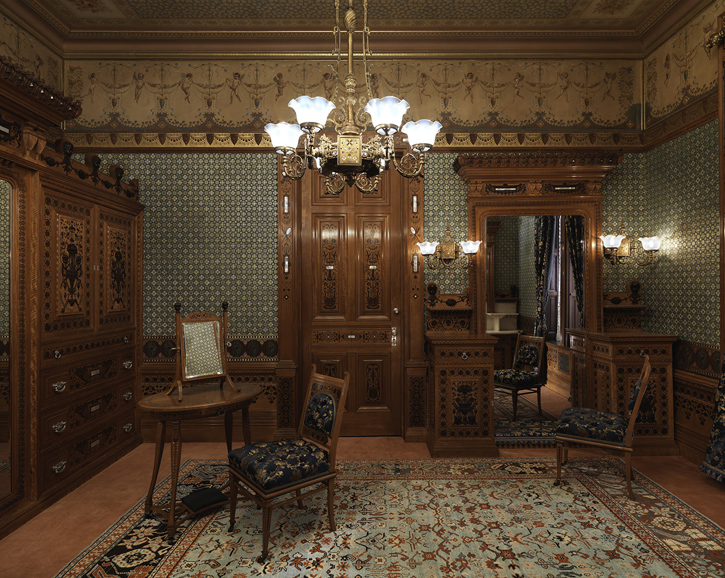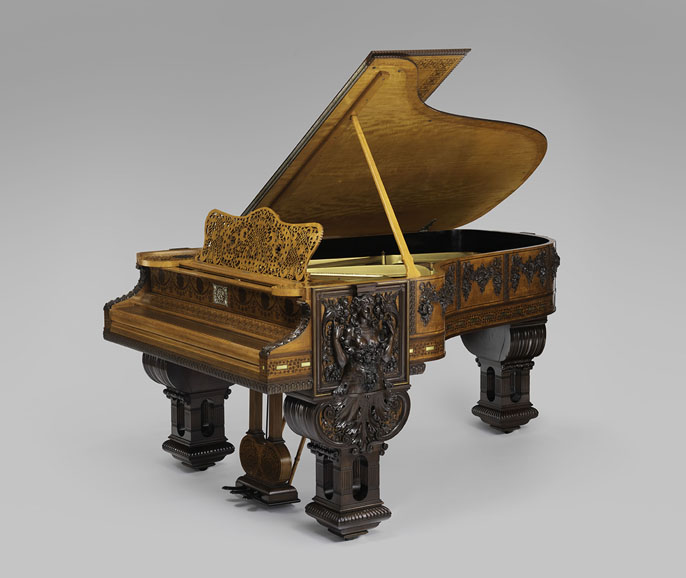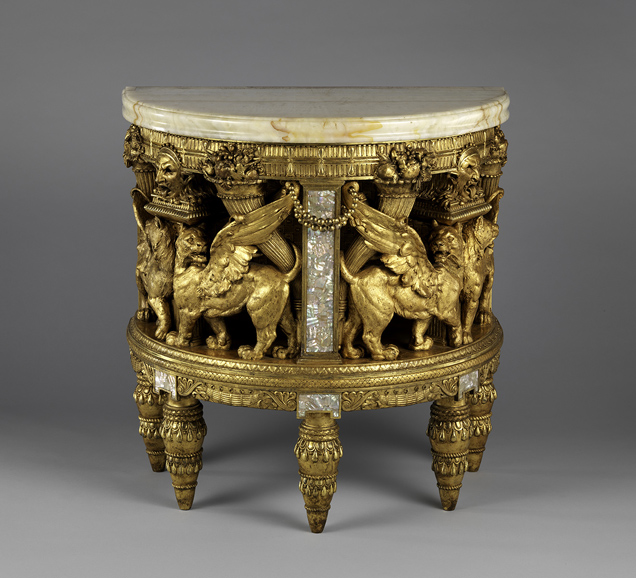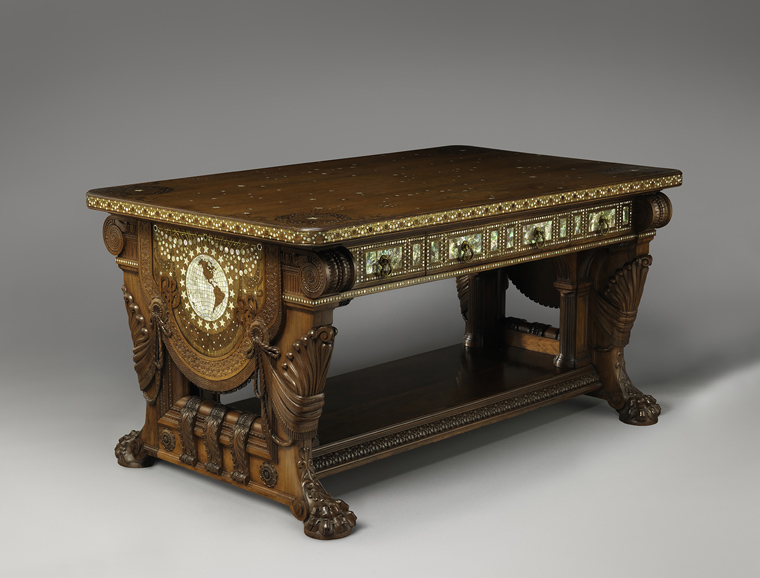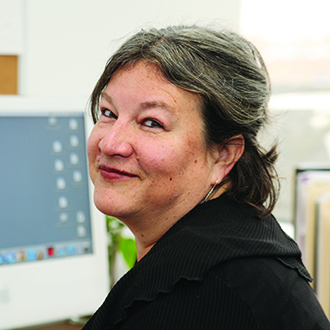For those fascinated by the opulence of the Gilded Age in New York, a visit to The Metropolitan Museum of Art is most certainly in order.
The destination is an exhibition that is holding breathtaking court in The American Wing of the Manhattan institution.
“Artistic Furniture of the Gilded Age” — in actuality a three-part exhibition — vividly celebrates the love that Gilded Age luminaries had for fine furnishings and decorative objects.
And the centerpiece is the unveiling of the Worsham-Rockefeller Dressing Room, a fanciful retreat preserved from a New York City home thanks to the enduring generosity – and love of preservation — of the Hudson Valley philanthropic stalwarts, the Rockefeller family.
Throughout three galleries in The American Wing, intricately crafted cabinets and side chairs, secretaries and paintings, fire screens, stained-glass panels and ephemera, tables, tiles and even a rare 1882 Steinway art case piano serve to transport one back in time.
Alice Cooney Frelinghuysen, the Anthony W. and Lulu C. Wang curator of American Decorative Arts, and Nicholas C. Vincent, manager of Collections Planning, have organized the exhibition, with Moira Gallagher, research assistant.
WHAT A JEWEL
One of the most exciting moments of a visit will, no doubt, be the first glimpse into the Worsham-Rockefeller Dressing Room, which Frelinghuysen calls “always a favorite of mine, truly a jewel box of a room.”
The Met has crafted a clever introduction — visitors first encounter the dressing room by peeking through a lace-curtained window.
It’s a delight to see how the room — commissioned by art collector and philanthropist Arabella Worsham in 1881 for her West 54th Street home — was executed as a unified work, a signature concept of the Aesthetic Movement. From the satinwood furnishings to mother-of-pearl accents to intricate marquetry, most of the room is original, with stenciled walls and textiles reproduced from its original designs.
What was a second-floor room with a window overlooking the property’s garden and carriage house was designed as a private retreat, in which a lady’s maid would help Worsham (and later, Laura Spelman Rockefeller) with her hair, clothing, jewelry, makeup and perfume.
Then mistress of railroad magnate Collis P. Huntington, Worsham had tapped George A. Schastey & Co., the New York-based cabinetmaker and decorator, to complete the home’s interiors.
Soon after, though, she would go on to marry the then-widowed Huntington and sold the property, fully furnished, to John D. Rockefeller.
Rockefeller, co-founder of the Standard Oil Company, would himself retire in 1897 and spend most of his time at the family estate, Kykuit, in Tarrytown. In more than 50 years of ownership of the West 54th Street home — likely used only occasionally — few changes were made. When Rockefeller died in 1937, the home would be demolished but the family saved three rooms, which John D. Rockefeller Jr. donated to The Museum of the City of New York and the Brooklyn Museum.
“It just shows you how strong preservation is in that Rockefeller family,” says Frelinghuysen.
The dressing room was donated to The Met when the MCNY was undergoing renovations in 2007 and has been both conserved and firmly identified as the work of Schastey.
“We started to really think about this room, who did it and how we could interpret it,” says Frelinghuysen.
The solution was The Met turning a decommissioned stairwell into the cozy space that the dressing room occupies today.
Set to become a permanent part of the suite of historic interiors in The American Wing, the dressing room is a showstopper and remains a rare surviving commission by Schastey (1839-1894).
INTRODUCING SCHASTEY
The second part of the exhibition flows naturally, putting a true spotlight on the designer through “Artistic Furniture of the Gilded Age: George A. Schastey,” which continues through May 1 in The Erving and Joyce Wolf Gallery.
Though the Schastey name is only starting to receive contemporary acclaim, the firm thrived during the Gilded Age, rivaling noted competitor Herter Brothers in both reputation for quality and scope of work.
Schastey, Frelinghuysen, says, “was a complete, relative unknown” to the modern audience. “We needed to bring George Schastey to light.”
And the process has been particularly rewarding for all those involved, she adds.
“It’s pretty exciting for us… to have a new name and be able to put together an important body of work by that new name.”
Here the museum highlights Schastey’s work through the firm’s trademark aesthetic and sought-after execution. Models and historic documents round out the exploration.
Vincent, exhibition co-organizer, says, “We really are making a case that this is museum-quality, even though it was done for a private residence.”
REVISITING THE HERTER BROTHERS
The concluding portion of the exhibition, “Artistic Furniture of the Gilded Age: Herter Brothers and the William H. Vanderbilt House,” which will continue through Jan. 31, 2017, offers a refreshed installation in the adjacent Deedee Wigmore Galleries.
Here, the focus is on the museum’s recent acquisitions of Herter Brothers furniture, in particular for its most important commission, designing and creating interiors for William H. Vanderbilt during 1879 and 1882. These elaborate pieces — which were crafted at the same time as the Worsham commission – offer a fitting conclusion to the overview of New York’s Gilded Age in all its sumptuous glory.
For more, visit metmuseum.org.

